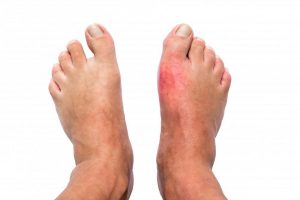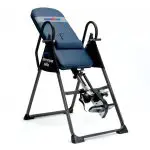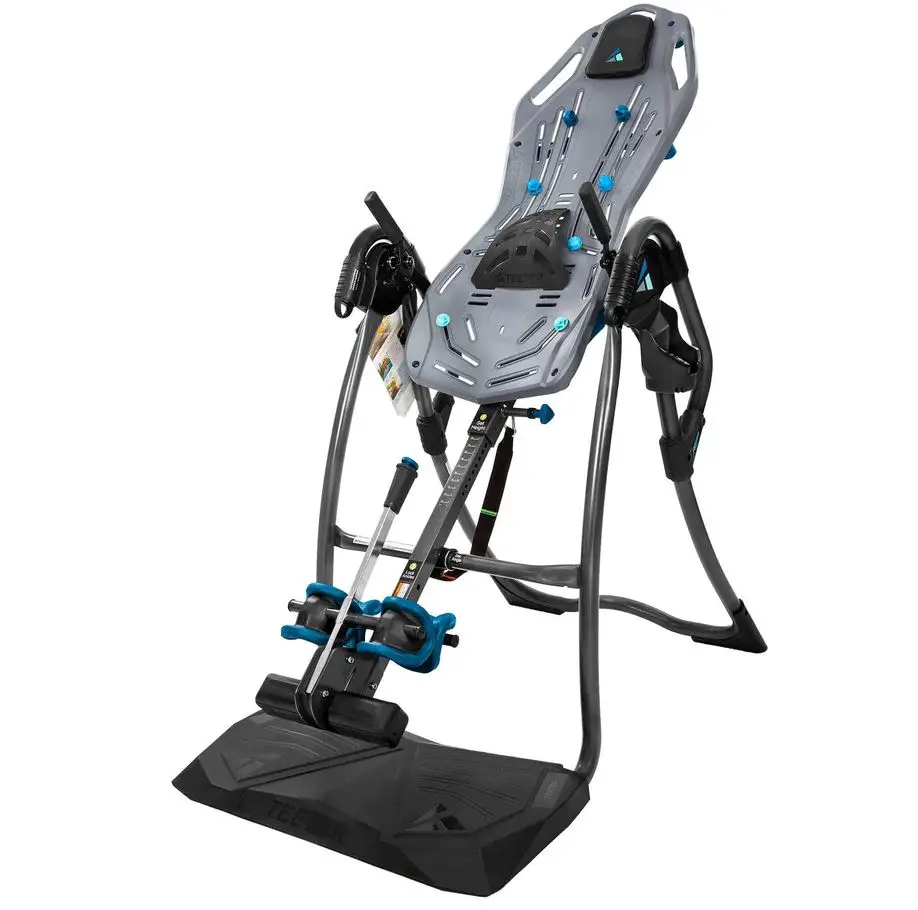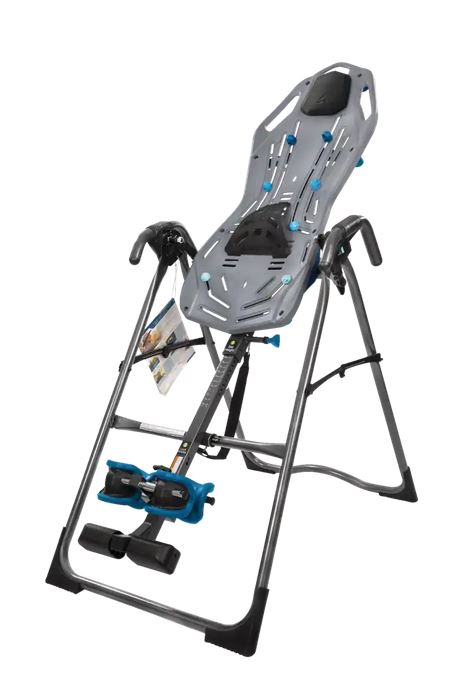Most of us, at one point in our lives, have suffered from a pinched nerve due to a herniated disk caused by injuries or lousy sitting postures. Neuropathy is similar to this but a more adverse condition. Neuropathy or peripheral neuritis is the dysfunction or damage of one or more nerves resulting in muscle weakness, numbness, tingling, and pain in the affected area.
If you are experiencing this condition, you are wondering whether an inversion table can help neuropathy. An inversion table helps reduce back pain by stretching out your spine. When you are upside down, the pressure of gravity on your nerves and the pressure exerted on the disks in your spine ease, relieving pain. Keep reading this article to understand more about the inversion table and neuropathy.

What are inversion tables?
Inversion tables are equipment that allows you to assume an inverted or upside-down position at various angles. A person lies on an inversion table and is secured by a belt. The position helps stretch and decompress the spine, easing pressure from the discs and relieving back pain. An inversion table is commonly used to treat back pain but can also treat stiff neck, sciatica, herniated disks, trapped nerves, and many other ailments.
Lying upside down increases the spaces between your spinal vertebrae, thus relieving the pressure on the nerves and disks and increasing circulation in the affected area.
So, can an inversion table help neuropathy?
Inversion tables can help neuropathy if it is not in the acute stage. Inversion tables can help relieve pain caused by pinched nerves if you are in the beginning stages of neuropathy. Ideally, an angle of 60 degrees or more allows your spine to take a rest to relieve the pressure on your nerves by decompressing the constricted and tight muscles supporting your spine.
If you use an inversion table 2 to three times per day, you can experience more relief and be more comfortable, as your muscles will have more time to relax and stretch.
However, this relief is only temporary, as inversion tables do not cure the underlying cause of your neuropathy. But they can be an alternative treatment while you wait for your neuropathy symptoms to disappear or lessen over time.
This is because it also provides spinal decompression, reducing disc bulging and alleviating pain.

What are the benefits of using an inversion table?
1. Improved spinal health
Inversion therapy involves spinal decompression, which reduces pressure on your nerves and is suitable for your neck, spine, and back. In addition, it stretches out the tight muscles supporting your spine, thus reducing back pain by decompressing the disks and relieving pressure on the nerves.
2. Reduced muscle strain
Inversion therapy eases muscle strains leading to improved flexibility and freedom of movement in the affected area. This is useful in preventing injuries caused by misalignment of joints or muscles resulting from repetitive activities such as walking or sitting for long periods.
3. Reduced need for surgery
The zero-gravity nature of inversion therapy reduces the pressure on your nerves and pain in your spine, thus reducing the need for spinal surgery to relieve pressure on those affected nerve endings.
4. Improved circulation and decreased inflammation
Inversion therapy increases circulation in the affected area of your body by increasing blood flow to and away from that area. This increases blood pressure by increasing oxygen flow to essential organs like your heart. At the same time, it decreases inflammation caused by swelling of muscles or tissue due to injuries or muscle strain.
Risks of using inversion tables
An inversion table is not safe for everyone. While you are hanging upside down, your blood pressure increases, and your heartbeat slows down. The tension in your eyes increases, so if you are suffering from glaucoma or are prone to developing this condition, you should use an inversion table with caution.
If you have osteoporosis, an inversion table could be risky for your bones as your muscles support your spine. If your muscles become weak or strained, inversion therapy will not be helpful but will aggravate the situation. In addition, people with herniated disks and dislocated joints should not use an inversion table.
FAQs
1. Is neuropathy curable?
Peripheral neuropathy cannot be cured, but there are ways to manage it. While inversion therapy is not a cure, it can relieve and sometimes reduce the severity of neuropathy, whether or not you are already experiencing symptoms.
2. Can an inversion table help my stiff neck?
Inversion therapy will only relieve your stiff neck if your stiff neck is caused by your muscles and joints being out of alignment. This can be easily remedied by using inversion therapy to decompress your spine and stretching out your stiff neck.
3. Can I use an inversion table if I have osteoporosis?
If you have osteoporosis, an inversion table is safe for you if you wear a harness or belt to secure yourself when upside down. However, this may not be the case if you have a history of back surgeries because it could aggravate the situation.
Conclusion
Inversion tables are popular today due to the growing interest in natural pain relief treatments. They offer benefits that can be gained from other devices, such as traction systems and decompression tables.
The upside-down position relieves the pressure from your spine, thus easing your pain, providing spinal decompression, increasing circulation to vital organs like your heart, and decreasing inflammation. But it isn’t for everyone, as using an inversion table can be risky for people with herniated discs and joints prone to dislocation.





